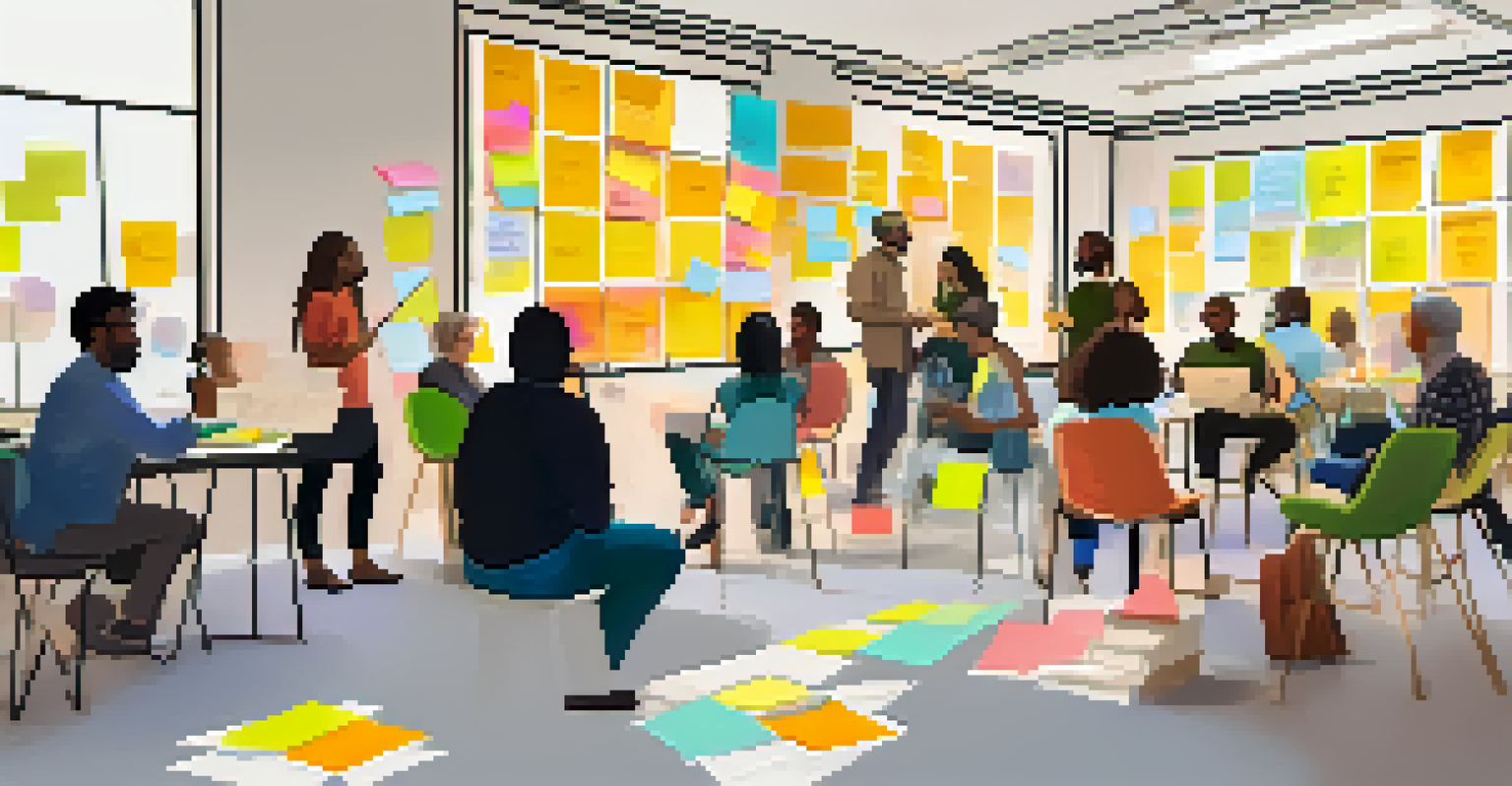Inclusive Design Principles: Building for All Abilities

Understanding Inclusive Design: A Foundation for All
Inclusive design is about ensuring that products and environments are accessible to everyone, regardless of their abilities. It goes beyond basic accessibility, focusing on the diverse needs of all users, including those with disabilities, the elderly, and even children. By considering how different people interact with their surroundings, we create spaces that invite participation and foster community.
Design is not just what it looks like and feels like. Design is how it works.
Imagine a public park that offers pathways wide enough for wheelchairs, sensory gardens for individuals with autism, and play equipment suitable for children of all abilities. Such thoughtful design not only accommodates differences but also enhances the experience for everyone. This holistic approach ensures that no one feels excluded or marginalized.
At its core, inclusive design champions the idea that everyone deserves equal access and opportunity. By incorporating this principle, designers can create environments that reflect our diverse society, making spaces that everyone can enjoy and utilize fully.
Key Principles of Inclusive Design: What to Consider
There are several key principles to keep in mind when implementing inclusive design. First, flexibility is crucial; designs should accommodate a range of preferences and abilities. For instance, a public building might feature both stairs and ramps, allowing individuals to choose their preferred mode of access.

Another principle is simplicity. Clear, intuitive designs help everyone navigate spaces with ease, reducing confusion and frustration. Think about the difference between a cluttered room and an organized one; simplicity invites calm and makes tasks easier.
Inclusive Design Benefits Everyone
Inclusive design creates accessible environments for all, enhancing experiences and fostering community engagement.
Lastly, consider feedback. Engaging with users during the design process ensures that their needs are met. This could be as simple as conducting surveys or focus groups to gather insights on what works and what doesn’t.
Empathy in Design: Walking in Others' Shoes
Empathy is a powerful tool in inclusive design. By understanding the experiences of individuals with different abilities, designers can create solutions that truly address their needs. For example, a designer might spend time using a wheelchair to navigate a space, gaining firsthand insight into potential obstacles.
The design of products, services, and environments should be inclusive and accessible to people of all abilities.
This empathetic approach helps to identify barriers that might not be immediately obvious. It encourages designers to ask questions and seek out diverse perspectives. By listening to the voices of those impacted by their designs, they can create more effective and compassionate solutions.
Ultimately, empathy fosters a sense of connection and community. It reminds us that we are all part of a larger tapestry, where every thread contributes to the overall picture.
Usability Testing: The Heart of Inclusive Design
Usability testing is essential in the inclusive design process. By observing real users as they interact with a product or space, designers can uncover issues that may not be visible during the planning phase. This testing phase often reveals critical insights that lead to more effective designs.
Involving users with varying abilities during testing ensures that the final product meets the needs of a diverse audience. For example, if a new app is being developed, including users with visual impairments during testing will help identify necessary adjustments, such as voice commands or screen reader compatibility.
Empathy Drives Effective Solutions
Understanding diverse user experiences through empathy leads to designs that effectively address individual needs.
This iterative process of testing and refinement not only improves usability but also builds trust with the community. When people see their feedback being taken seriously, they feel valued and are more likely to embrace new designs.
Technology's Role in Inclusive Design: Innovation for All
Technology plays a pivotal role in advancing inclusive design. From smart home devices that assist individuals with mobility challenges to apps that enhance communication for those with speech impairments, innovation can break down barriers. These advancements create opportunities for independence and improve quality of life.
For instance, voice-activated technology can significantly aid individuals with limited dexterity, allowing them to control their environment without physical strain. Similarly, augmented reality can provide visual aids to help people navigate unfamiliar spaces. The possibilities are endless, and the potential benefits are profound.
Embracing technology not only enhances accessibility but also fosters creativity in design solutions. As technology continues to evolve, so too does our ability to create inclusive environments that serve everyone.
Community Engagement: Designing with Users in Mind
Engaging with the community is vital in the inclusive design process. By involving potential users from the outset, designers can gather insights that lead to more relevant and effective solutions. Community workshops, where individuals share their experiences and ideas, can be an invaluable resource.
For example, a city planning team that holds open forums with residents can learn about specific challenges faced by individuals with disabilities. These conversations can illuminate opportunities for improvement, guiding the design of public spaces that are welcoming to all.
Community Engagement is Key
Involving the community in the design process ensures that solutions are relevant, effective, and widely embraced.
Moreover, community engagement fosters a sense of ownership and pride in shared spaces. When people feel involved in the design process, they are more likely to advocate for and care for the resulting environments.
Future of Inclusive Design: A Vision for Tomorrow
Looking ahead, the future of inclusive design holds exciting possibilities. As awareness of diverse needs continues to grow, we can anticipate a shift in how designers approach their work. A greater emphasis on collaboration and interdisciplinary approaches will likely become the norm.
Emerging technologies, such as artificial intelligence and machine learning, will also play a transformative role. These tools can help designers analyze user data more effectively, leading to tailored solutions that respond to individual needs. Imagine a world where public spaces adapt in real-time to the preferences of their users!

Ultimately, the future of inclusive design is about creating a world where everyone can thrive. By embracing these principles today, we pave the way for a more equitable and accessible tomorrow.